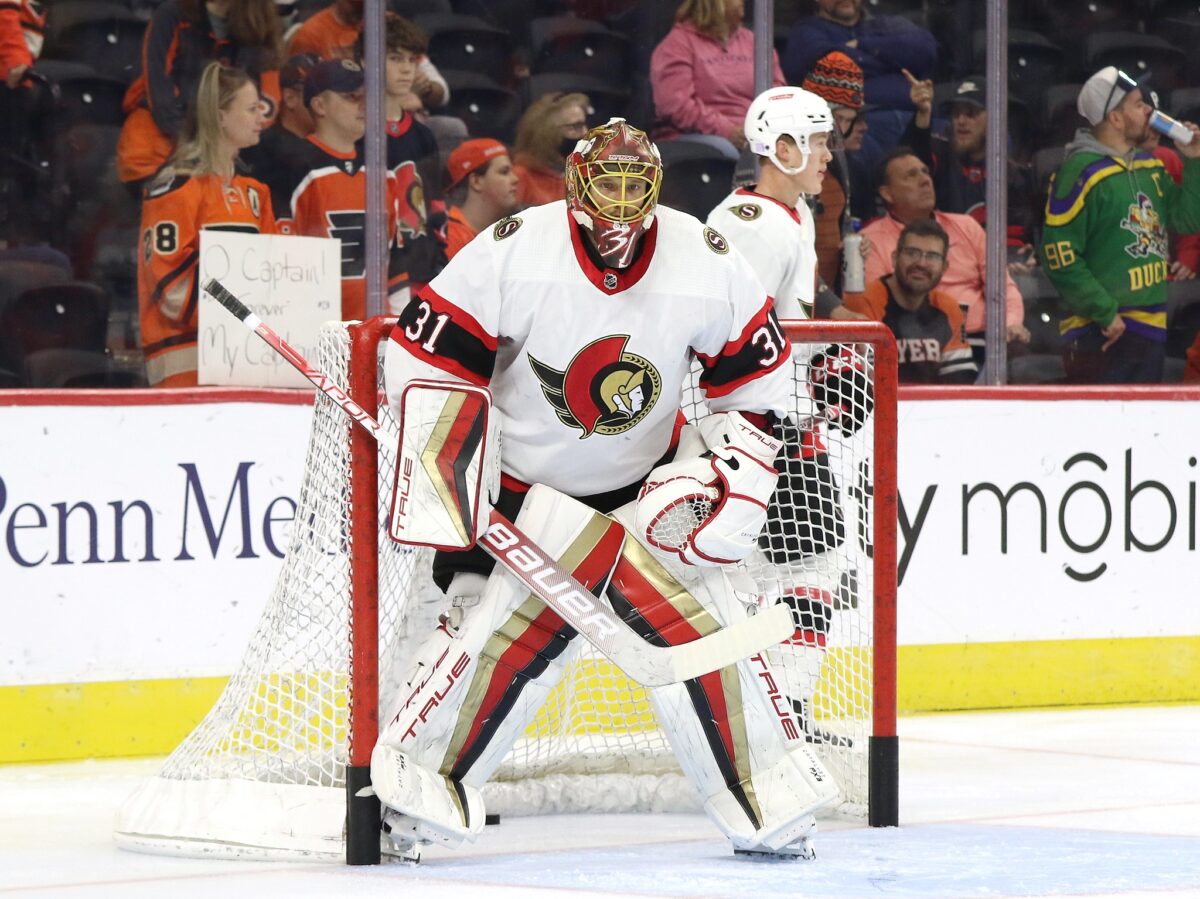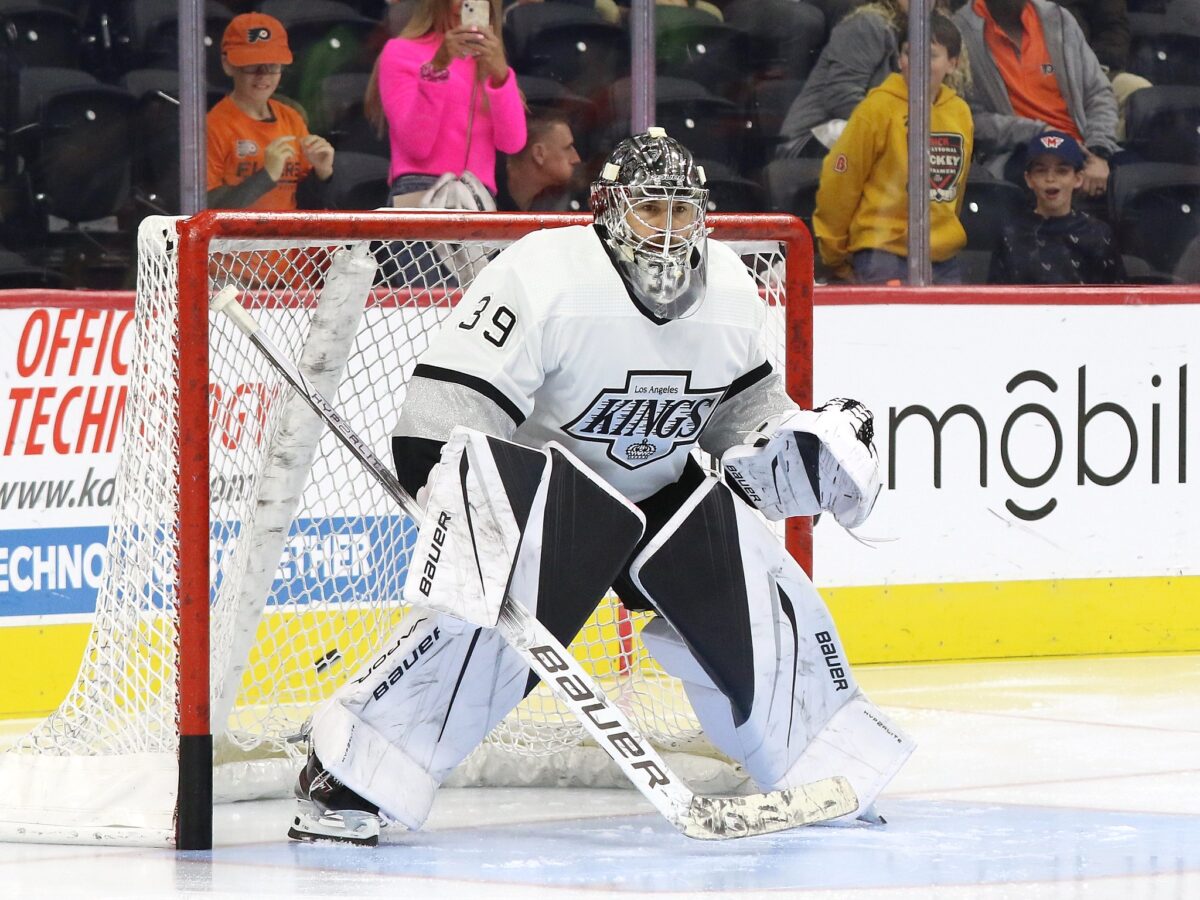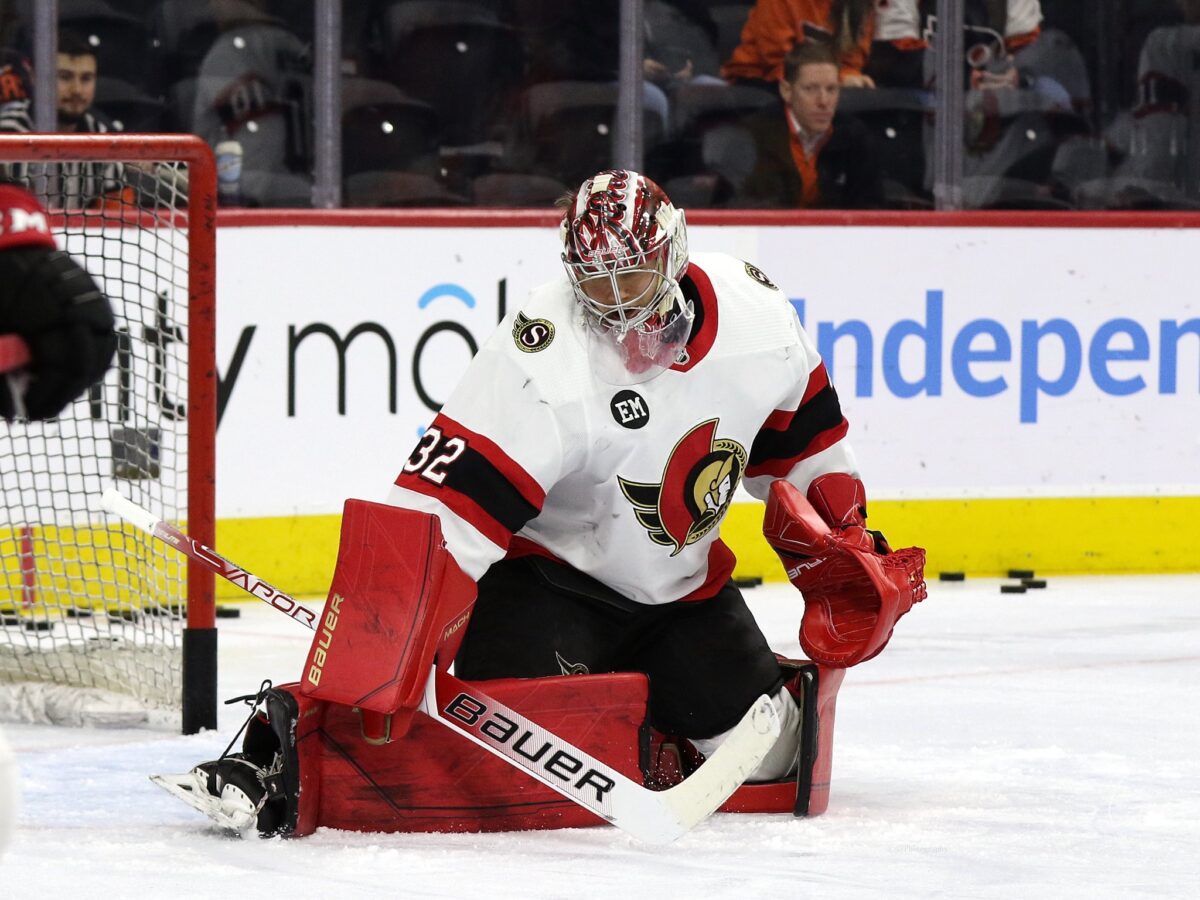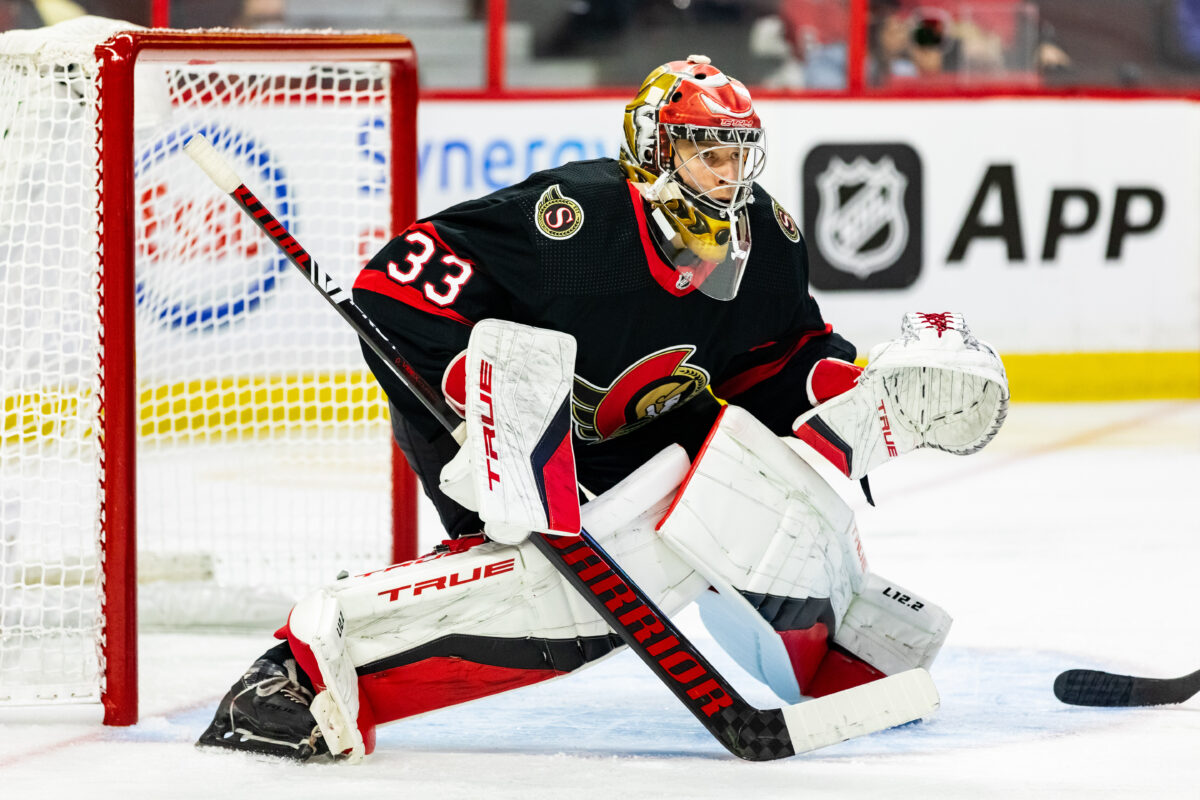The Ottawa Senators won’t make the playoffs this year and one of the reasons is that they have terrible goaltending. If they want to see postseason action next year they need to fix it.
Weak goaltending isn’t a new problem for the Senators. The last decent goaltender with any longevity they had was Craig Anderson. He earned his 10-year service pin, but left Bytown before the start of the 2020-21 season.
Related: Senators Could Regret Joonas Korpisalo Contract
Let’s take a look at what explains this season’s crummy goaltending and what Senators management might be able to do about it.
Ottawa Senators’ Problems with Goaltending
So just how shabby is Ottawa between the pipes?
As of Jan. 3, the Senators have given up four or more goals in 18 of the 33 games they have played so far this season. No team in the NHL can expect to have a winning record allowing that many goals that often.
The Senators’ netminding duo of Joonas Korpisalo and Anton Forsberg is one of the worst in the league. It ranked 28th in The Athletic’s most recent goalie tandem power rankings (from, Jesse Granger, “NHL goalie tandem power rankings: Which NHL teams are best set up for success?”, The Athletic, 9/11/2023). Individually, Korpisalo and Forsberg ranked 75th and 83rd in Moneypuck’s ranking of 2023-24 goaltenders to this point in the season.

Here’s how the two stack up on two of the most common measures of goalies – save percentage (SV%) and average-goals-against per game (GAA):
| SV% 2023-24 | Career SV% | GAA 2023-24 | Career GAA | |
| Korpisalo | .889 | .902 | 3.63 | 3.07 |
| Forsberg | .883 | .906 | 3.36 | 3.11 |
The tale this table tells is that this season, neither has matched their career averages. In other words, they’ve taken a step backward. Not only that, but neither is even average by league standards where the average SV% so far in 2023-24 is .903 and the average GAA is 2.95.
And yes, I can already hear some readers protesting that these measures of performance can say as much about the team playing in front of a goaltender as they do about the twine minder himself. That’s true – sometimes.
Even if we take a look at some more advanced statistics that some say are better goalie gauges, Korpisalo and Forsberg come out as mediocre at best. Take goals-saved-above-average (GSAA), which compares the goals a netminder prevented given his SV% and shots faced, with the league average SV% on the same number of shots. So far this season, Korpisalo has notched an uninspiring minus-9.5 and Forsberg a minus-7.1. The league average GSAA last season among all goaltenders who played at least 39 games was 4.3. To put things into further perspective, the netminder with the best GSAA in the league this season is the Los Angeles Kings’ Cam Talbot (why does that name sound familiar?) who has notched an impressive 13.5.

Some pundits like to combine the GSAA with the goals-saved-above-expected (GSAx) statistic, which is just expected goals against, minus actual goals against, or shots saved that the goalie should save based on shot quality and quantity. I won’t put you to sleep explaining how it is calculated, but so far this season Korpisalo has registered a minus-8.1 – the fourth worst in the league. Forsberg’s minus-10.5 puts him at 3rd worst in the NHL.
Is it Really Goaltending that Makes the Senators So Bad?
At some point, and we are 33 games into the Senators’ 2023-24 season, you have to accept that the Senators are who the statistics say they are. And what they say is that they are a bad hockey club hobbled by ghastly goalies.
Even so, the question often arises as to why goaltenders who leave Ottawa do better with other teams. For example, Talbot this season has registered a SV% of .962 – one of the best in the league. Last season with the Minnesota Wild, former Senators goaltender Filip Gustavsson notched a .964 SV% making him one of the top 10 goalies in the league on that measure. While regarded as being too long in the tooth when he left the Senators in 2020, Anderson went on to put up numbers with the Sabres that were essentially equivalent to what he posted with the Senators over his 10 years with the club.

Not only that but why do the Senators seem to have a fondness for acquiring flops to put between the pipes? Senators fans still wince at the mention of Matt Murray and the $1.562 million of desperately needed cap space he chews up this season.
And then there’s the top goalies that they let slip between their fingers. Who could forget Robin Lehner who went on to flourish in Buffalo after leaving Ottawa? And what of Ben Bishop who the Senators shipped out of town to the Tampa Bay Lightning at the 2013 trade deadline? In sunny Florida, he became a starting goaltender and appeared in the 2016 All-Star Game.
So is it goaltenders who make the Senators a bad team, or is it the other way around? That is, does Ottawa make goaltenders bad? A case could be made that what ails the Senators isn’t so much goaltending as it is lousy coaching, a lack of systems and terrible defence.
What the Senators Could Do to Improve Their Goaltending
There’s not much short of moving out salary that the Senators can do to improve their goaltending situation. To bring up Mads Sogaard from the Belleville Senators with his $925,000 cap hit would put the team well over the salary cap.

Even if it were an option now, it may pose more risk to Ottawa’s long-term prospects in goal than Korpisalo’s contract. More than a few young NHL goalie prospects have been ruined by being brought along too quickly to the NHL.
Trading Korpisalo would be difficult given his performance this season, his reputation for inconsistency and the four years left on his contract with an average annual value (AAV) of $4 million. He’s overpaid and simply doesn’t represent good value on the trade market.
Forsberg would be easier to dump since he becomes an unrestricted free agent (UFA) at the end of the 2024-25 season and has a contract featuring a more digestible $2.75 million AAV. Even so, Senators general manager (GM) Steve Staios would need to find a buyer in desperate straits in goal if he is to move the big Swede.
Some say that with all the cap space coming free at the end of this season, the Senators should just go out and acquire the goaltending talent they need in the off-season. Yet the NHL isn’t fantasy hockey, and as Toronto Maple Leafs GM Brad Treliving once explained it, “the idea that you can go pick ‘this player’ off the player tree … it doesn’t happen that way.”
Finding good goaltenders is akin to searching for Sasquatch, and even if Ottawa could find the mythical beast, many have Ottawa (aka, Dullsville-on-the-Rideau) on their no-trade list. A case in point is Connor Hellebuyck, who last summer made it clear that he wanted out of Winnipeg but had Ottawa on his list (from, Bruce Garrioch, “GARRIOCH: Ottawa Senators score big by signing goalie Joonas Korpisalo to five-year deal”, 01/07/2023).
Senators’ Hopes for Next Season Depend on Solving Their Goaltending Problem
This season is the seventh consecutive that will end with the Senators playing golf early. Yet again, their playoff hopes were torpedoed by a slow start and unreliable goaltending.
If the Senators are going to turn things around next season they need a fast start underpinned by at least average performance between the pipes. As hard as it will be, acquiring that talent should be priority number one for Senators management.
